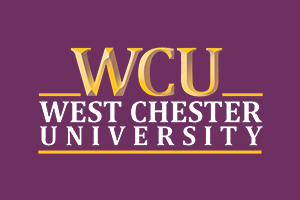Oral Histories
Research and Scholarship
The six diverse colleges which make up West Chester University exemplify a strong academic tradition of student engagement. Unique to our university is the Teacher-Scholar Model, in which professors integrate their own scholarship into their teaching, and teaching into their scholarship—creating high-impact learning experiences that engage students. Consequently, undergraduate and graduate students alike benefit from close collaboration with their instructors, contribute to research at home and abroad, and share in professionalization opportunities.
Take a tour with student co-curator Julia Zahm and Museum Director Michael A. Di Giovine
Clubs
Since its founding, the university has encouraged its students to become active on campus. Involvement in clubs builds leadership skills, allows for the exploration of different interests, provides rewarding extracurricular experiences, creates networking opportunities, and develops long-lasting friendships. Today, our community is enriched by over 280 student organizations active on WCU’s campus. These diverse clubs—academic, athletic, social, political, professional, and ethnic—spring up spontaneously, reflecting the needs and interests of the times in which the students live: From temperance groups in the late 1800s to sophisticated gaming clubs of today, they have a life history of their own.

Take a tour with student co-curator Chelsey Moore
Learn about WCU’s Banana Day tradition:
Gender and Sexuality
As a Normal School, West Chester’s student population always included a significant number of women, but society at the time did not treat gender and sexuality equitably. As society has become more progressive, and WCU’s community has grown and diversified, the university has become more inclusive; today, 60% of the study body identify as women. Thanks to visionary leadership and collaboration among students, faculty, administration and guests from the community, the university is working towards equity in the treatment of women, people of all gender identities and sexualities, and under-represented groups.

Take a tour of the exhibit with student co-curator Madelyne Maycheck
Race and Ethnicity
The realities of race and ethnicity on campus, and the struggle for civil rights, are unavoidable parts of our history. Like the nation as a whole, the university has struggled with how to address the equitable inclusion of different races and ethnicities, especially as it expanded and its student body diversified. But through the work of activists at all institutional levels, the past fifty years have been characterized by progress amid the continued search for equity. The Office of Equal Opportunity and Compliance as well as student organizations offer a number of programs to foster a more inclusive and representative campus climate.





































































